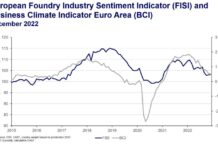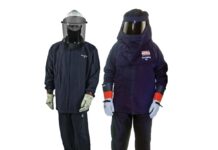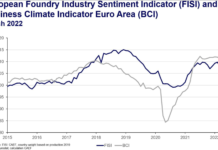Die-casting processes enable the cost-effective production of narrowly tolerated parts that have many beneficial characteristics. In certain cases, it is possible to optimize the mechanical properties even further by means of heat and surface treatment procedures.
Die-cast parts which are manufactured in the conventional manner are considered to be not heat-treatable, or only with difficulty. The reason is that gases are dissolved or trapped in the molten metal. When such cast parts are heated up to higher temperatures which are necessary for heat treatment operations, these gases expand and form bubbles with a negative impact on the mechanical strength and the dimensional accuracy of the parts. A way out is offered by procedures such as vacuum die-casting [1] and laminar die-casting.
Precipitation hardening
Parts which are made of heat-treatable alloys and produced with the mentioned procedures can be heat-treated. It is characteristic for the vacuum die-casting procedure that all areas of a casting machine which are reached by the melt are evacuated. Also the gases which arise when the melt flows in are continuously exhausted by a vacuum. When using the laminar die-casting process, on the other hand, a relatively low mould filling speed prevents that gases are trapped. The cast parts are annealed according to a time-temperature-profile which depends on the alloy and the dimensions. In this way, a homogeneous solid solution is generated in the parts. After a certain annealing time, the parts are quenched in water and in some cases re-annealed once more. This procedure is called T6 heat treatment [2 and 3]. After the first annealing process, the solution annealing, the solid solution is supersaturated with alloying atoms. A longer ageing of the parts at room temperature or at elevated temperatures has the effect that the surplus alloying atoms diffuse out from the solid solution, accumulate in certain boundary zones and form intermetallic compounds. During this process called precipitation hardening, the hardness and the mechanical strength of the microstructure and therefore also of the cast parts increase [4].
Aluminium in competition with cast iron
The Franken Guss foundry company based in Kitzingen, Gemany, which is specialized in iron and aluminium casting, uses the laminar die-casting process among other things for the manufacture of crank-case covers for large diesel engines. These covers are made of the curable aluminium casting alloy AlSi10Mg and undergo a T6 heat treatment process. Therefore, they have mechanical properties corresponding to those of the original parts that were made of ductile cast iron, but on top of that they are about 40% lighter (Fig. 1). Also certain magnesium alloys are curable [2]. In many cases, however, a heat treatment process is unnecessary because a fine-grained microstructure is generated during the casting process due to the high cooling speed. This gives the cast parts very favourable mechanical properties. Zinc parts manufactured by die-casting undergo a microstructure modification at room temperature caused by separation processes. The modification is linked with a decrease of the mechanical strength. This natural ageing effect is to be considered when designing such parts and can be anticipated with a heat treatment process [5].
Slight grinding and other surface treatment procedures
The surface of a workpiece is particularly subjected to external loads, for example wear and corrosion. Several procedures for the surface treatment such as slight grinding, galvanic coating and powder coating are offered to refine the surfaces of die-cast parts with a view to their subsequent function or in accordance with aesthetic aspects. The slight grinding process is very frequently used for die-cast parts. The functional principle is that the parts are filled into a vibrating tub where they come into shaking contact with abrasive grinding chips supported by aqueous substances. Like pebbles in a riverbed, which grind themselves mutually and get rounded, the cast parts are deburred and their edges rounded off. The process can be carried out relatively easy, requires only short processing times and generates a high surface quality (Fig. 2) [6]. At the trade fair EUROGUSS, several exhibitors display solutions for the surface-related post-processing of cast parts made from non-ferrous metals in the “Pavilion Surface Technology” (Hall 6, Stand 6-333).
The trade fair EUROGUSS 2018
Die-casting foundries are high-tech enterprises which use many processing methods. An insight into the state-of-the-art in die-casting and suggestions as to how die-casting foundries can strengthen and expand their market position will be provided at the trade fair EUROGUSS. The range of information is enriched by the 18th International Die Casting Congress, workshops of the Association of German Engineers (VDI) and the presentation of prize-winning castings of the Zinc Die Casting, the International Aluminium Die Casting and the Magnesium Die Casting Competitions. EUROGUSS 2018 – International Trade Fair for Die Casting: Technology, Processes, Products will take place in Nuremberg, Germany, 16 – 18 January 2018.



